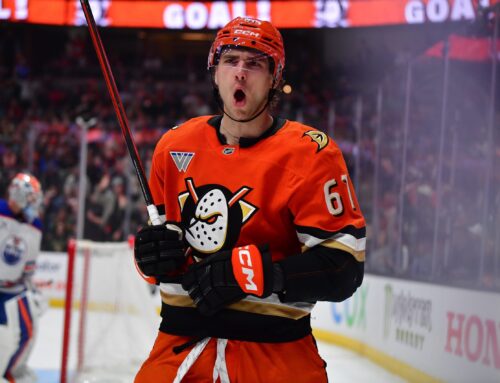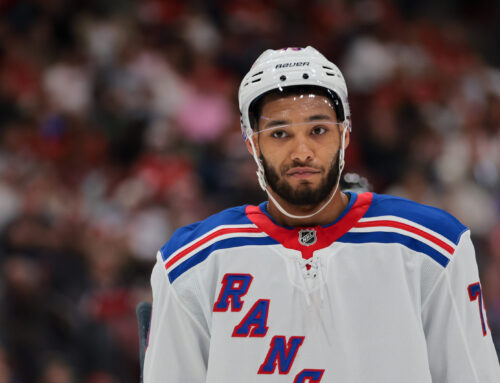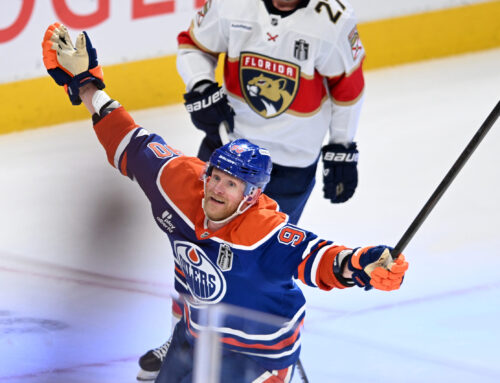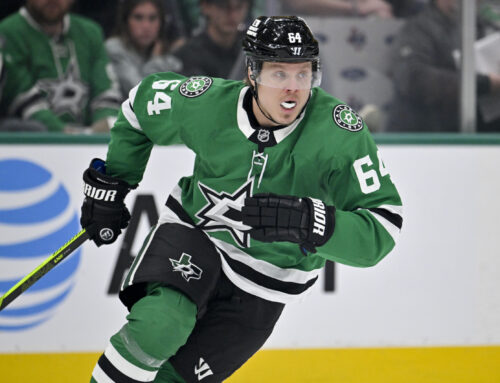This time of year, every fantasy general manager believes they are Nostradamus, especially when it comes to players that we think other general managers are sleeping on.
Aside from winning the championship, there’s perhaps no greater feeling than when we hit on those sleeper picks. It gives one a sense of validation that they know something no one else knew, and deep down, we’re thinking “I told you so!” Of course, we rarely focus on the sleepers we got wrong, but almost everyone can recount the story of how they knew a player was going to break out that no one saw coming.
Below are 10 players that fantasy general managers are sleeping on this season. Keep in mind that sleepers aren’t just players that are expected to not produce and then all of a sudden rack up 80 points (although predicting those are fun as well). A sleeper is anyone that can significantly outperform expectations.
10. Seth Jarvis
Jarvis is a popular sleeper pick, so maybe he shouldn’t technically be considered a sleeper. However, there are numerous fantasy GMs who need to be given a heads-up on how great Jarvis can be. Last year, he played frequently with Sebastian Aho and Andrei Svechnikov, but his ice time dropped throughout the season until the last quarter of the campaign. At that point, his ice time rose by more than two minutes per night compared to the third quarter, and Jarvis responded with 20 points in his last 22 games. That helped him finish with 40 points on the season, which is a decent rookie debut. He then followed that up with eight points in 14 postseason games. With new Hurricane Max Pacioretty injured for months, and last year Hurricanes Vincent Trocheck and Nino Niederreiter moved on to different teams, Jarvis has an opportunity to seize a regular top role and top power-play time.
9. Jakub Vrana
The 26-year-old Red Wing was limited to 26 games last season, which means he could be off the radar for many fantasy GMs. A classic case of out-of-sight, out-of-mind. However, he was excellent in those 26 games, finishing with 13 goals and 19 points. It was his third straight season of around a 60-point pace, but with injuries and Covid-shortened seasons, he’s only cracked the 50-point plateau once. Vrana should be a shoo-in for a top-six role, and if he can stay healthy, he should finally be able to reach at least the 60-point mark.
8. J.J. Peterka
Peterka is my pick for a surprise rookie. Each year, there’s always one or two rookies that surprisingly make their club (last year was Lucas Raymond), or have much better-than-expected seasons (Tanner Jeannot). Peterka made the move from overseas to the AHL last season, and his 28 goals and 68 points in 70 games led all rookies in the AHL and was tops on his team, the Rochester Americans. The kid can score, and if he makes the team and is put into a top-six role, could reach 40 points as a rookie.
7. Alex Newhook
One of the biggest reasons for optimism for Newhook is that there is an open spot on the top power-play unit. With Nazem Kadri now in Calgary, there’s an opportunity for Newhook to move into that spot, although he would have to beat out Artturi Lehkonen and Valeri Nichushkin for that honor. Even if the power-play doesn’t work out in his favor, Newhook looks primed to centre the second line this season. That’s a big step up from playing alongside Nicolas Aube-Kubel and Logan O’Connor, his most productive linemates at even strength last season.
6. Adrian Kempe
Last season, Kempe had 35 goals and 54 points, crushing his previous highs of 16 goals and 37 points. Yet, there is still room for improvement, and he could reach the 70-point mark this season. Last year, his ice time went up as the season went along, from 17:31 in the first quarter to 19:05 in the fourth quarter (when he maybe not so coincidentally had nine goals and 17 points in 17 games). Kempe has an underrated shot and could become even more of a power-play threat this season. Aside from the points, Kempe also contributes in shots (247 last year) and hits (111), shorthanded points (three) and a little bit in PIM (46).
5. Alex Tuch
There is much concern about the Sabres, as there isn’t much hope that Tage Thompson, Jeff Skinner and others can improve from last season. However, Tuch had 38 points in 50 games, a 62-point pace. He also had career highs in shots per game (2.8) and ice time (18:21 per night). He was also the key piece in the trade for Jack Eichel, so the Sabres are going to put him in place to have a successful season. It’s worth noting that because of his size, we may still be another season away from his true breakout campaign.
4. Kaapo Kakko
As long as Kakko is in a top-six role, he needs to be on the radar as a breakout candidate. And since he hasn’t been that productive in his first three seasons, many don’t believe he will, which makes him a perfect sleeper candidate. Last season, his most frequent linemates were Mika Zibanejad, Chris Kreider, Artemi Panarin and Ryan Strome. So if he’s not on the second line, he’s on the first line. That’s a great sign. It also helps that the advanced stats show how great he’s been doing, even if the production isn’t there. One of these years, he will break out, and at the end of the season, everyone will talk about how we all knew it would happen and it wasn’t that much of a surprise.
3. Jake DeBrusk
This one is still a little up in the air, as it will mostly depend on where he lines up. Last year, he was in a bottom-six role until the last quarter of the season, where he was moved to the top line with Patrice Bergeron and Brad Marchand. He finished with 16 points in his final 18 games. Early rumors have DeBrusk starting on the top line this year, with the Bruins electing to play David Pastrnak with David Krejci on the second line. If that happens, not only does DeBrusk have a chance of reaching 30 goals for the first time in his career, but there’s also a solid possibility he reaches the 60-point mark (his previous high is 43 points).
Heiskanen’s career high so far has been 36 points, and his best 82-game pace has been 42 points. However, when John Klingberg was in Dallas, Heiskanen was never the main guy. He hovered around 50 per cent for offensive zone starts in all four of his seasons, and was only on the ice for at least 50 per cent of Dallas’ power-play minutes in one of those seasons. Compare that to Klingberg, who started in the offensive zone on 55-57 per cent of his starts, and was always on the top power-play unit. With Klingberg now in Anaheim, that leaves Heiskanen as the main offensive force from the back end. It wouldn’t be shocking if he put together a 60-point campaign this year.
Toffoli didn’t produce as well in Calgary as many may have hoped, as he finished with 23 points in 37 games, followed by five points in 12 postseason games. However, this season, he’s expected to play alongside Jonathan Huberdeau. If you want to know how much impact Huberdeau has on his linemates, just look at what he did in Florida. Sam Bennett went from an afterthought in Calgary to a 57-point pace when lining up with Huberdeau. Anthony Duclair became a 30-goal scorer alongside Huberdeau and reached a 60-point pace plateau the last two seasons (the only two times he hit that mark in his career). Sam Reinhart had a career-high 31 power-play points last year; Huberdeau picked up a point on 29 of those. Toffoli is already a consistent 20-goal, 50-point producer. What type of lofty totals can Toffoli reach alongside Huberdeau? Seventy points have to be in play, if not 80.





 PHI
PHI ANA
ANA VAN
VAN DET
DET BUF
BUF NYR
NYR MIN
MIN
